"If it wasn't for those raiders we would have reached the city 3 months ago."
Commander Marcelle
The ARH-58 Decimator is a large twin seater attack helicopter designed for long range raiding and extended duration close air support missions. It's large size allowed for longer range and greater payload capacity. It featured twin primary rotor and a smaller pusher propeller in the rear. It is used primarily by the Arsenian Army and Navy.
Development
In early 1982 a combined arms exercise was held at The Hasteros valley. this exercise would result in the discovery that the Arsenian Army and Marines would have a hard time with amphibious operations due to the lack of close air support. While there were close air support assets such as the mantis fighter and Bulwark helicopter could provide good support there wasn't enough of them to properly support an amphibious landing. furthermore extended during operations would require aircraft to return back to base or carrier to rearm and refuel. It was also discovered that the disruption of enemy supply convoy could be a done by a low flying helicopters equipped with large fuel tanks.
In 1985 a new helicopter program started, inspired by the findings of the Hasteros Valley exercise and the Ursea-Arsenia War. The new helicopter would be far larger the the previous AH-40 Bulwark and feature larger fuel tanks and weapons capacity. To acquire the best helicopter for the program a competition was held to determine the best approach for the program. Design submission was delivered by 3 companies the Holiviera aircraft company, Indiere engineering, and Akaves Heavy Industries. While Indiere and Akaves proposed relatively traditional design the Holiviera submission was quite radical, featuring a twin rotors and pusher configuration. While the other two proposals were quite realistic and could be done without much new technology the Holiviera proposal had incredible performance but required several new technology to be developed. Finally by the end of 1985 the Holiviera proposal was accepted for further development, while Holiviera design was selected the other two manufacturers would continue to help with the program.
By 1987 the first prototype would begun testing. it's first prototype would be a disappointment for the top brass of the army and navy, this was due to the first prototype's usage of the older KN-550 engine. Even with underpowered first prototype testing continued to be fruitful, with handling and weapon capacity improvements. By 1988 new KN-610 engines was delivered and the helicopter began breaking performance and speed records. The testing for the aircraft was beginning to be wrapped up in 1989 and production contact being planned. In 1990 production began in Holiviera's new Rostinski production plant, the initial order was for 500 examples in the B variant.
History
In 1991 political and economical unrest led to a military rebellion in the Union of Ordosa. While initially the rebels were open to negotiations it would devolve in to armed conflicts and soon civil war. Early on the Ordosan government claimed to be able to put down the rebellion, but the desertion of large numbers of the army and airforce led to the government requesting international help in dealing with the crisis. Several nations would answer the call by sending their foreign legion, with Ursea Coalition sending 300.000 soldiers with complete air support, And Arsenia would send in an army of 200.000 soldiers and it's airforce.
With the large amounts of foreign players in the war the whole operation was still led by Ordosan high command. The Coalition and Ordosan forces would primarily be focused on the European front and the Arsenian and Ursean marine handling the eastern and overseas territory. A combined Ursean, Arsenian and Ordosan fleet was formed to launch naval invasion to the overseas and far east territory. The fleet would be the consist a large number of ships including battleships, aircraft carriers and landing ships.
The first landing in the campaign would also be the hardest Vladivostok. In the early hours on 21st September 1992 a large volley of missiles began to be fired from the invasion fleet heading towards suspected scud and anti ship missile installation. Next is the SAM hunting fighter's from the Ursean and Arsenian carriers, their anti radiation missile destroy and suppress the SAM installation around the city. Finally helicopters from the fleet began heading towards the outskirts of the city, they consist of Seahawks and Vipers from USS America and USS Tarawa, Terrier and Decimator from ANS Antemma and ANS Larzhan. They raced towards the landing zone near Dunai and Russky Island. The Decimator and Vipers raced ahead to destroy clear the area ahead of the transport. Soon a rebel tank regiments were spotted and the decimator began opening fire with their Halbert missiles quickly destroying large portions of the rebels remaining air defense equipment. The decimator soon closed the range, they fired their rockets at the tanks causing large amounts of damage and creating chaos in the area. The landing zone was now cleared and transport began landing.
At the same time the landing was occurring a flight of 12 decimator had already began hitting targets behind enemy lines. These attacks cause severe chaos and a communication blackout for the rebel forces. Their long range and large ammunition capacity allowed them to destroy a large number of supply and command infrastructure behind enemy lines effectively, diminishing the rebels organization and command structure. With the landed troops securing the landing zone naval forces started landing as well. Now the decimator began operating as close air support with many of them operating for hours in support of the infantry.
Along with ground attack the decimator also had the task of short range air defense. They would score several success against low flying helicopters and attack aircraft. They proved to be an excellent support platform being able to accompany the infantry throughout the operation. By mid day most of the rebels had surrendered and the retreating troops would be hunted down throughout the day. The decimator was highly respected by the ground troops, with their aircraft being the only constant support platform in the area and able to dish out heavy artillery support when needed.
The campaign would continue for another 2 years and would bolster relation between the three superpowers and proved the efficacy of quick and precise airborne and naval landing. After the war the decimator was a mainstay in every conflict Arsenia was involved in, the helicopter would receive several upgrades throughout it's long service life. The newest C variant was equipped with a top mounted radar, improve engine and enhanced electronics. By 2024 there was a total of 3000 decimator had been produced with most of them in service with the Arsenian Army.
Design
ARH-58C Decimator
The aircraft uses a twin primary rotors setup with an additional pusher propeller in the tail. It is crew by 2 person a gunner and pilot in a tandem configuration with the gunner siting in front. The helicopter use two NK-640 engine and has fuel capacity of 17.000 liter. The two large primary rotors and small pusher in the tail allows the helicopter to fly at speed of up to 500km/h. The Decimator true to its name poses a vast arsenal of weaponry including AGM-65 Halbert, AAM-24 Raven, and RKT-30 Finch. It's primary weapon is the twin 50mm cannon with 1200 rounds of ammo capable of unleashing large amounts of firepower.
Notes
I am not an expert of helis and i don't know how to make it more stable
The 50mm turret doesn't move (for now)
No cockpit (for now)
Specifications
Spotlights
- SomeSPGuyWhoLikesLore 2 months ago
- KPLBall 2 months ago
General Characteristics
- Created On Android
- Wingspan 64.4ft (19.6m)
- Length 75.4ft (23.0m)
- Height 22.4ft (6.8m)
- Empty Weight 23,560lbs (10,686kg)
- Loaded Weight 54,274lbs (24,618kg)
Performance
- Power/Weight Ratio 5.143
- Horse Power/Weight Ratio 0.092
- Wing Loading 137.0lbs/ft2 (668.8kg/m2)
- Wing Area 396.2ft2 (36.8m2)
- Drag Points 9016
Parts
- Number of Parts 167
- Control Surfaces 8
- Performance Cost 1,149

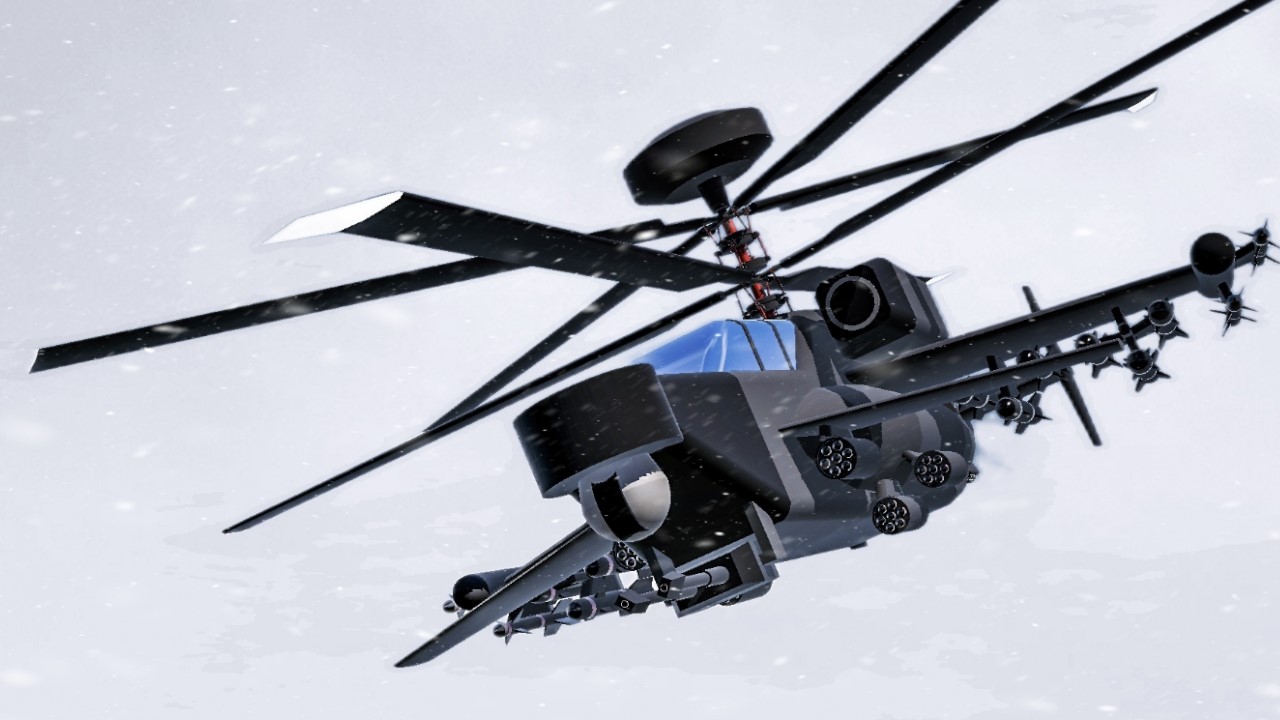
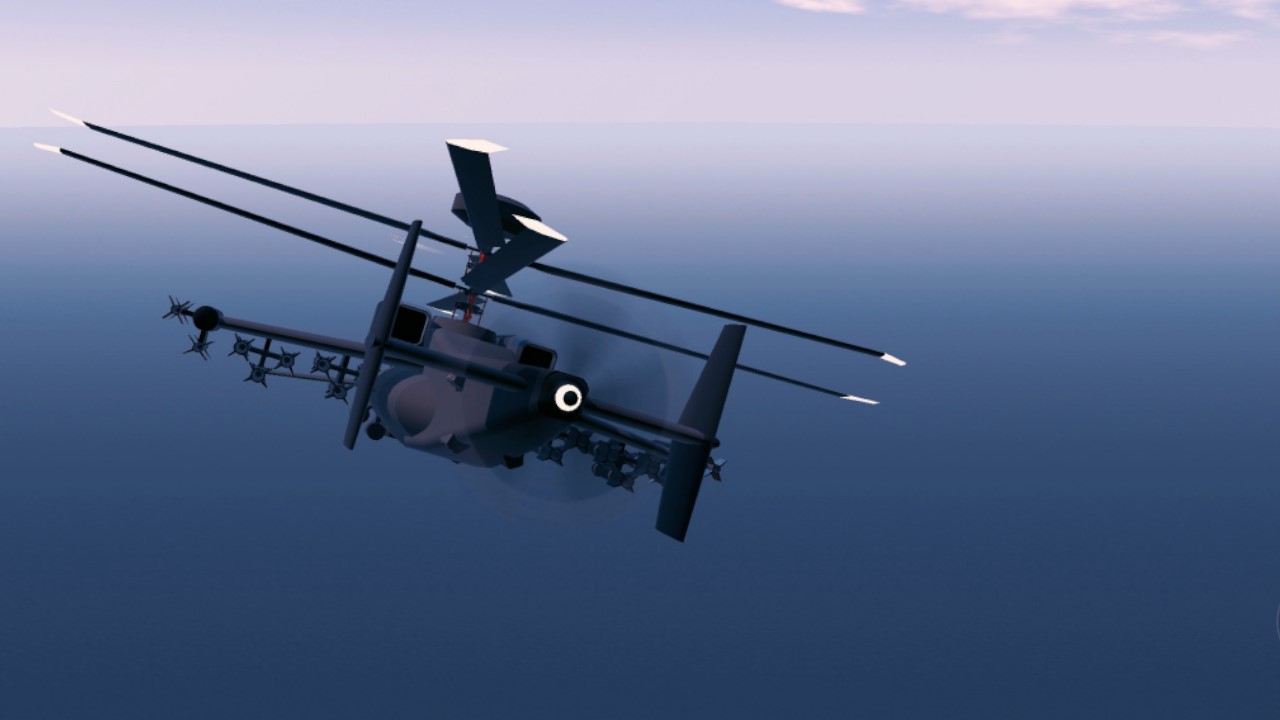
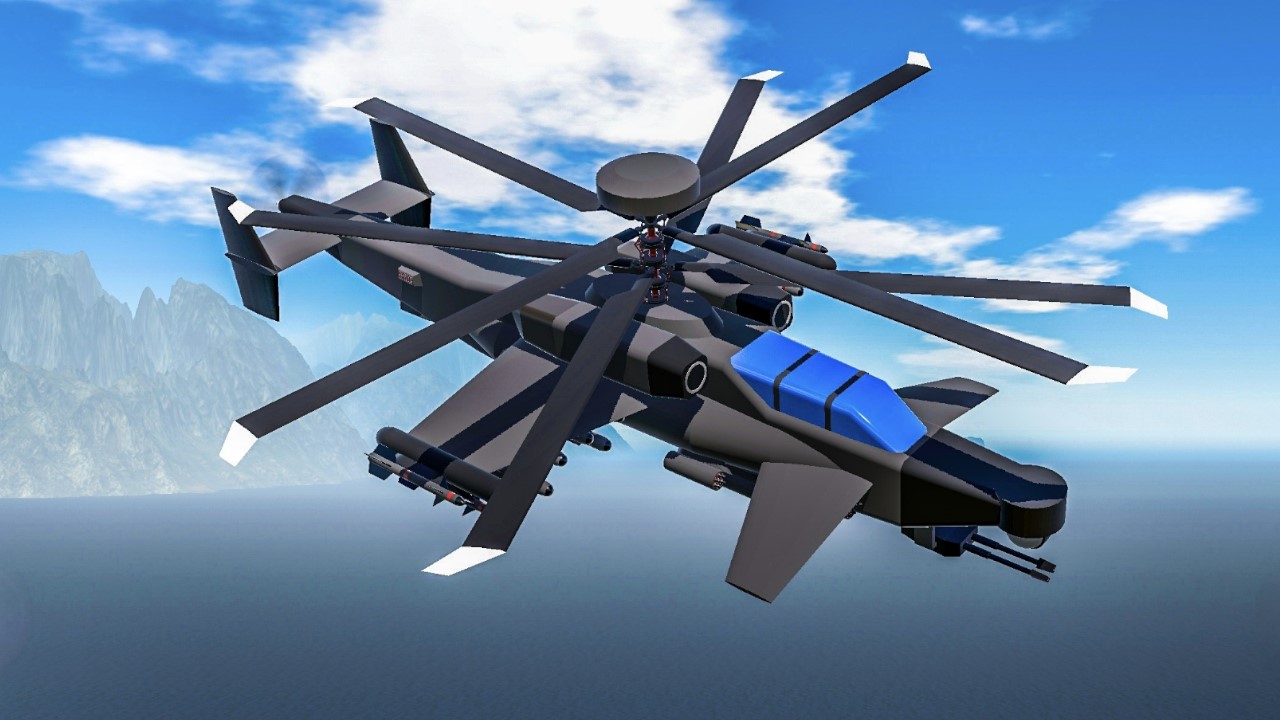
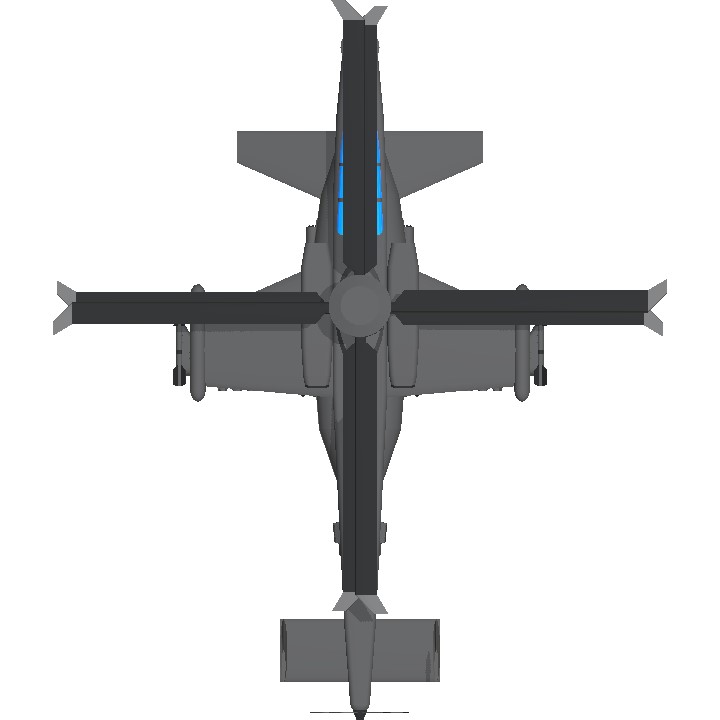
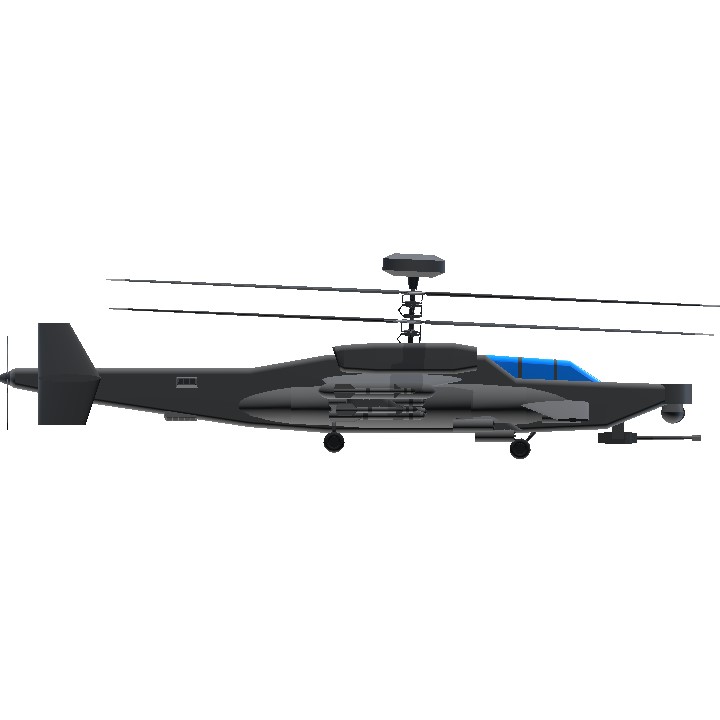
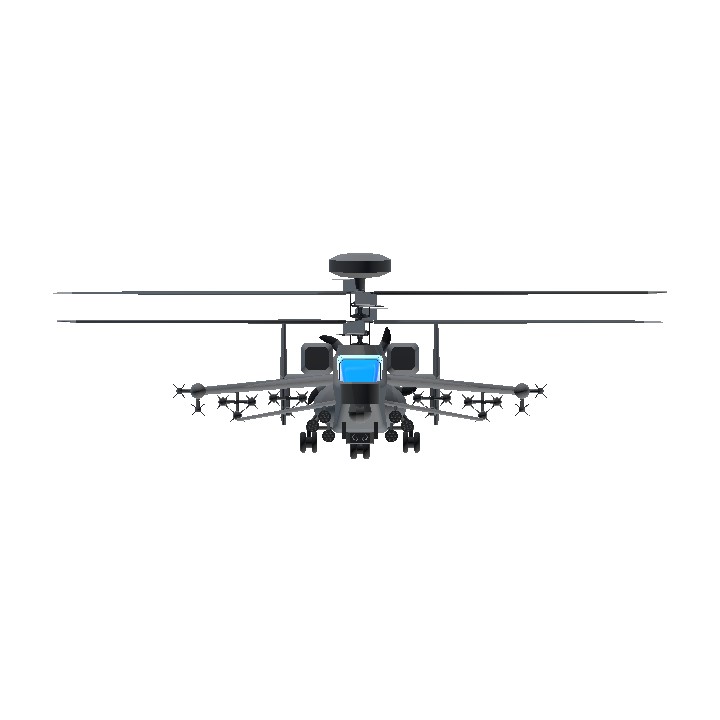
Ka-50/Ka-52 but better
(Tbh honest I still prefer Raider X)
Holy moly
.
He'll be a very good friend to Molonyet
Kamov with steroids overdose